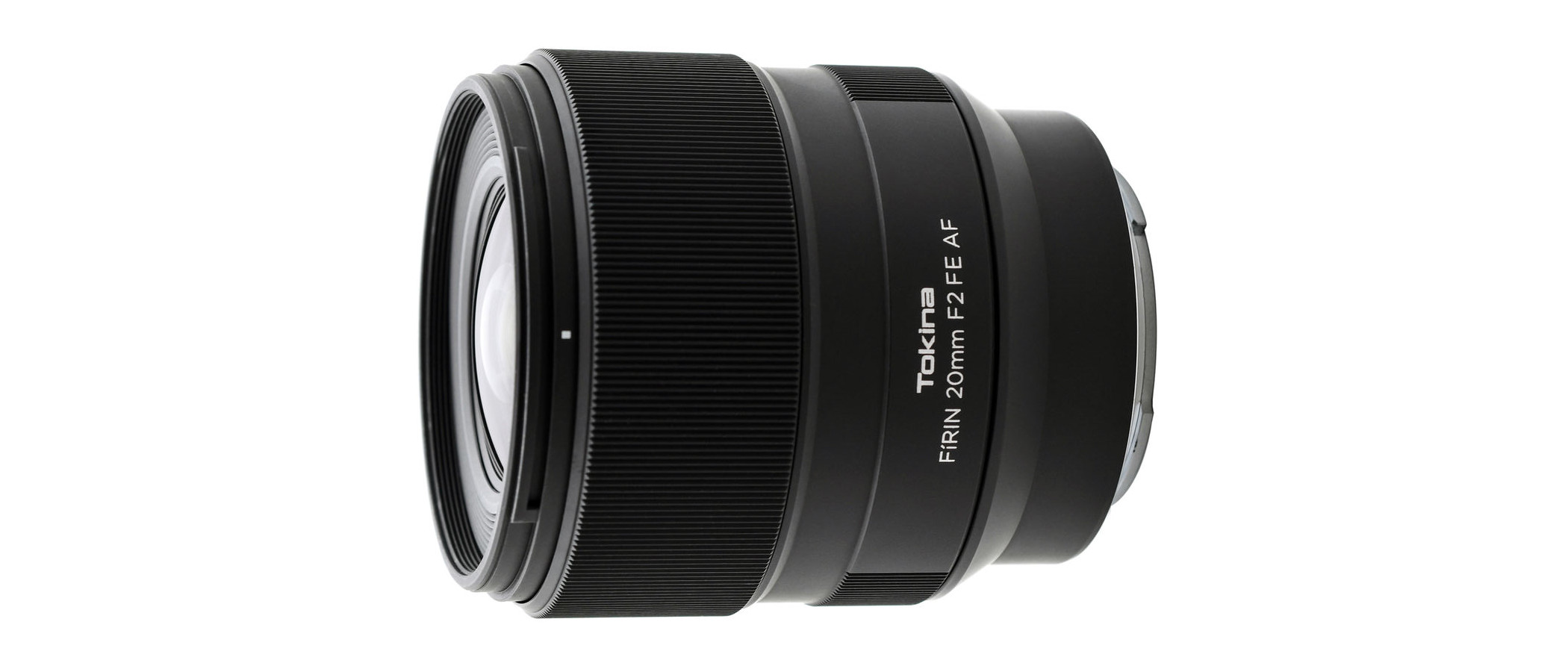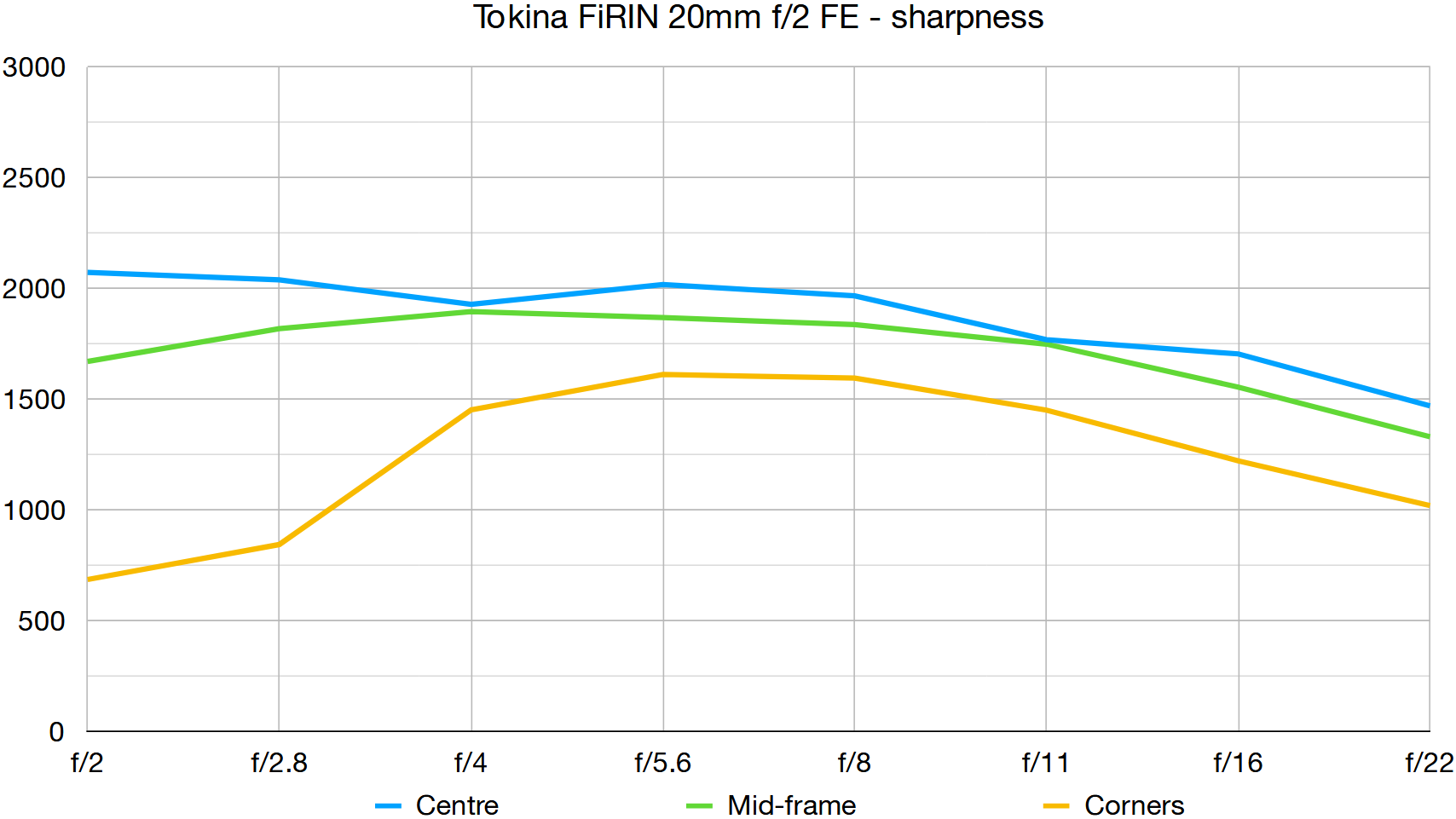Digital Camera World Verdict
Tokina actually makes two ‘FiRIN’ 20mm F2 primes for Sony mirrorless cameras. This autofocus lens looks rather more basic and a lot less ‘hands-on’ than its manual-focus sibling. Although it’s a relatively bare-bones affair with no switches or buttons, it’s a solid performer with reasonably nippy autofocus and very pleasing image quality, making it a good choice for everything from architectural interiors to sweeping landscapes and starry night skies.
Pros
- +
Wide viewing angle and aperture
- +
Good build quality
- +
Pleasing image quality
Cons
- -
No AF-MF switch
- -
No aperture ring
- -
No weather-seals
Why you can trust Digital Camera World
The Tokina FiRIN 20mm F2 FE AF is one of a trio of FiRIN lenses in Tokina’s glass arsenal. The name harks back to a Gaelic word for ‘truth’. There’s a 100mm macro optic boasting full 1:1 magnification, and a dynamic duo of ultra-wide 20mm lenses. This is the autofocus model, the other being a manual-focus lens with the same f/2 aperture rating.
Specifications
Mount: Sony E (FE)
Full-frame: Yes
Autofocus: Yes
Stabilization: No
Lens construction: 13 elements in 11 groups
Angle of view: 92.7 degrees
Diaphragm blades: 9
Minimum aperture: f/22
Minimum focusing distance: 0.28m
Maximum magnification ratio: 0.1x
Filter size: 62mm
Dimensions: 73x82mm
Weight: 464g
Key features
Whereas the manual-focus FiRIN 20mm is fitted with an aperture control ring, focus distance scale and depth of field markers, the autofocus edition has a relatively spartan look and feel. Indeed, there’s no focus distance scale and the only external moving part is the focus ring.
Switching between auto and manual focusing relies on the use of in-camera menu rummaging, but the lens is compatible with Sony’s DMF (Direct Manual Focus) mode, which enables manual override during autofocus. Autofocus itself is driven by a ring-type ultrasonic actuator but, compared to that of most mirrorless lenses that currently feature stepping motors, it’s relatively pedestrian and more clearly audible.
High-tech optical components include two glass molded aspherical elements and three SLD (Special Low Dispersion) elements, the latter aiming to reduce chromatic aberrations and enhance clarity.
Despite its generous viewing angle, the lens weighs in at just 464g, has a fairly small 62mm filter thread and is supplied with a bayonet-fit, petal-shaped hood. Build quality doesn’t feel as rock-solid as in some of Tokina’s more conventional lenses, designed with DSLRs in mind, but there’s a high-precision feel to the handling. No weather-seals are incorporated in the build.
Performance
Impressive center-sharpness is at its peak when shooting wide-open but edge-sharpness is comparatively disappointing at apertures wider than f/4. Color fringing and distortion are very minimal. A major plus point for astrophotography is that coma and astigmatism towards the corners of the frame are extremely well controlled.
Lab results
We run a range of lab tests under controlled conditions, using the Imatest Master testing suite. Photos of test charts are taken across the range of apertures and zooms (where available), then analyzed for sharpness, distortion and chromatic aberrations.
We use Imatest SFR (spatial frequency response) charts and analysis software to plot lens resolution at the center of the image frame, corners and mid-point distances, across the range of aperture settings and, with zoom lenses, at four different focal lengths. The tests also measure distortion and color fringing (chromatic aberration).
Sharpness:
Center-sharpness is at its best when shooting wide-open and remains pretty much as excellent through to f/8. It’s still very good at f/11-16, only really dropping off at f/22. Edge/corner-sharpness is comparatively poor at f/2-2.8 but picks up very well in the f/4-16 sector of the aperture range.
Fringing:
Color fringing is very negligible across the whole image frame, right out to the edges and corners, at all aperture settings.
Distortion: 0.25
The best camera deals, reviews, product advice, and unmissable photography news, direct to your inbox!
Unusually for such a wide-angle lens, the Tokina produced a touch of pincushion rather than barrel distortion in our lab-tests, but it’s of a very low order.
Verdict
Tokina actually makes two ‘FiRIN’ 20mm F2 primes for Sony mirrorless cameras. This autofocus lens looks rather more basic and a lot less ‘hands-on’ than its manual-focus sibling. Although it’s a relatively bare-bones affair with no switches or buttons, it’s a solid performer with reasonably nippy autofocus and very pleasing image quality, making it a good choice for everything from architectural interiors to sweeping landscapes and starry night skies.
Read more:
• Best camera lenses to get
• Best Sony wide-angle lenses
• The best lenses for astrophotography
• Best Sony lenses
Matthew Richards is a photographer and journalist who has spent years using and reviewing all manner of photo gear. He is Digital Camera World's principal lens reviewer – and has tested more primes and zooms than most people have had hot dinners!
His expertise with equipment doesn’t end there, though. He is also an encyclopedia when it comes to all manner of cameras, camera holsters and bags, flashguns, tripods and heads, printers, papers and inks, and just about anything imaging-related.
In an earlier life he was a broadcast engineer at the BBC, as well as a former editor of PC Guide.




